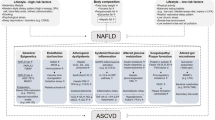Abstract.
Apolipoprotein M (apoM) is a novel apolipoprotein found mainly in high-density lipoproteins (HDL). Its function is yet to be defined. ApoM (25 kDa) has a typical lipocalin ß-barrel fold and a hydrophobic pocket. Retinoids bind apoM but with low affinity and may not be the natural ligands. ApoM retains its signal peptide, which serves as a hydrophobic anchor to the lipoproteins. This prevents apoM from being lost in the urine. Approximately 5% of HDL carries an apoM molecule. ApoM in plasma (1 μM) correlates strongly with both low-density lipoprotein (LDL) and HDL cholesterol, suggesting a link to cholesterol metabolism. However, in casecontrol studies, apoM levels in patients with coronary heart disease (CHD) and controls were similar, suggesting apoM levels not to affect the risk for CHD in humans. Experiments in transgenic mice suggested apoM to have antiatherogenic properties; possible mechanisms include increased formation of pre-ß HDL, enhanced cholesterol mobilization from foam cells, and increased antioxidant properties.
Similar content being viewed by others
Author information
Authors and Affiliations
Corresponding authors
Additional information
Received 28 November 2008; received after revision 15 December 2008; accepted 16 December 2008
Rights and permissions
About this article
Cite this article
Dahlbäck, B., Nielsen, L.B. Apolipoprotein M affecting lipid metabolism or just catching a ride with lipoproteins in the circulation?. Cell. Mol. Life Sci. 66, 559 (2009). https://doi.org/10.1007/s00018-009-8764-8
Published:
DOI: https://doi.org/10.1007/s00018-009-8764-8




